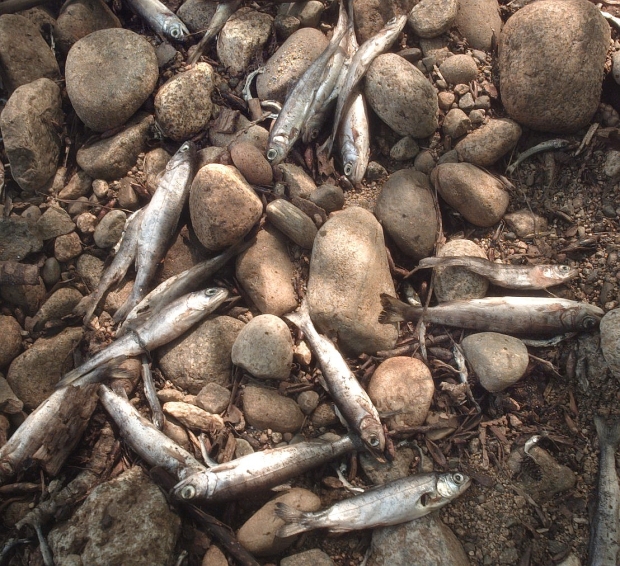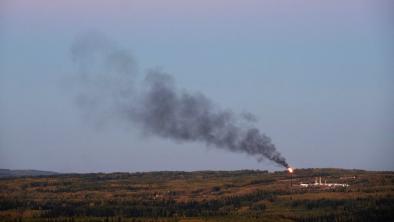Most run-of-river B.C. hydro projects can harm fish
Sunday, November 03, 2013
VANCOUVER SUN

Study finds all but one of 44 projects is on fish habitat, including salmon, trout and char
Almost 100 per cent of private run-of-river power projects studied in B.C. are located on streams where they could affect fish, an interim study for the Pacific Salmon Foundation has found.
Foundation president and CEO Brian Riddell said in an interview that while “most people sort of assume” that these hydro projects are located in stretches of river away from fish habitat, the reality is quite different.
Run-of-river projects have the capacity to impact fish living immediately upstream of water intakes, in the middle reaches where water is diverted through pipes to power houses and, finally, in downstream habitat.
Preliminary research of 44 run-of-river projects has found that up to 73 per cent have the potential to impact fish in the upper reaches and closer to 88 per cent in the lower reaches.
“There is only one facility that does not have salmonids present ...” said Riddell, in reference to salmon, trout and char species.
Environmental issues include water temperatures and oxygen levels, sediment movement, rates of water flow including rapid fluctuation (ramping) that can strand juvenile fish, impacts of water intakes and passage through spillways.
The study, which is due to be completed in December, is also looking at the effectiveness of fish mitigation/compensation projects.
The 44 run-of-river projects, mostly in southwestern B.C., including Vancouver Island, also show a huge disparity in the level of monitoring required depending on whether they were approved in the 1980s or present-day.
About 55 per cent of the 44 facilities generate less than 10 megawatts of hydro power.
“There are some sites where we only really got the water licence because they weren’t required to do a lot of the direct monitoring,” said Riddell, noting a more recently built site offered up some 15,000 pages of documents. “I’m not sure blame is involved. There might have been the thinking that, ‘They’re high enough in the (water) system, there won’t be much of an effect.’”
For newer facilities where monitoring is required, no one is fully analyzing those thousands of pages of documents.
“We need a different approach,” said Riddell, a former senior scientist with the federal fisheries department. “It’s not just about monitoring and sending in reports. Someone has to go through them.”
The foundation has hired Vancouver consultants Essa Technologies to study the impact of the run-of-river sector on salmonids, including at-risk bull trout, at a cost of more than $300,000.
Funding is from Clean Energy B.C. — which spearheaded the study and represents run-of-river operators, the California-based Moore Foundation and B.C.’s Living Rivers Trust Fund.
Paul Kariya, executive director of Clean Energy B.C., said the report is “critical to the credibility of the clean-energy sector” and that “protecting the environment is job one.” Kariya is a former executive director of the Pacific Salmon Foundation.
Gwen Barlee, a run-of-river watchdog with the Wilderness Committee, said she is concerned about the quality of monitoring data supplied by industry under condition of anonymity. “What we don’t know is the most concerning,” she said. “I’d be wondering how fulsome that data is.”
Barlee added that freedom-of-information documents have shown “considerable non-compliance” in the industry, including repeated incidents of juvenile salmonids being left high and dry when water flows drop too quickly.
She noted that conditions are bound to deteriorate as a result of the federal government downsizing its fisheries staff and reducing the threshold for conducting environmental impact assessments on projects that can affect fish.
Steve Thomson, Minister of Forests, Lands, and Natural Resource Operations, speaking to Clean Energy B.C.’s annual conference in Vancouver this week, said the clean-energy sector represents more than $4 billion in capital expenditures. The province wants to help streamline the approval process for industry while ensuring that environmental standards are met, he said.
Thomson said there are now almost 70 hydro projects operating in B.C. and three wind power operations, with more than 130 First Nations receiving financial benefits through partnerships with the industry.
Freedom-of-information documents obtained from Thomson’s ministry found 749 non-compliance incidents from a total of 16 hydro plants in southwest B.C. in 2010.
They included 313 incidents related to ramping, 292 of not notifying government officials of problems, 101 to not fulfilling mitigation requirements, and 43 related to not maintaining in-stream flow rates.
Photo: An interim study has found nearly all private run-of-river power projects are located on streams where they could affect fish. Rates of water flow are of concern, including rapid fluctuation (ramping) that can strand juvenile fish, such as those pictured.


